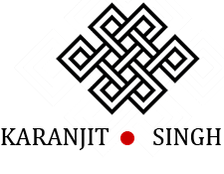Terrorist.
Raghead.
Fucking Osama.
Paki-peiceofshit.
jihadi.
Just when I had thought I had grown weary and inattentive of the countless mindless names I had been called on the streets of New York, I felt a tight punch to my neck. I fall on the crowded broadway street, my food scattered, my glasses misplaced and blood oozing its way out of my ear. “Go back home you fucking terrorist”, said the drunken man in that orange jacket.
As I lay on the ground trying to comprehend the bitterness of his harsh racist words, I looked for someone to help me up, someone to ask me if I was okay, someone to condemn what had just taken place in front of them, someone to tell me that everything will be alright. As people just walk past me, I picked myself up and walked away from the event shaken, scared and shocked.
In the days that followed the attack, I found myself more reserved and closed. I could feel the adrenaline rushed paranoia numb my senses at random moments on the subway, in a theatre while watching a movie or while taking a casual stroll with my camera by the seaside. I’d dream the face of my attacker; the incident playing like a broken cassette on loop again and again in my head.






The 21st century was born and baptized in blood with 9/11 forever changing the political and social landscape of the entire world. In the bloody war that stretched over almost a decade, the pent up anger of the American people manifested itself into something ugly on the home front. Just three days after 9/11, a Sikh gas station owner in Arizona was attacked and brutally murdered in cold blood for wearing the turban and adoring a beard. The mindless islamophobia that had crept its way into the streets of America, took its toll on thousands of innocent peace loving Sikhs. Many Sikhs that I knew, cut their sacred hair started dressing more western in a bid to stay safe in the 'land of the free'. The symbols that made us Sikhs now made us look like terrorists.
After I was attacked, I found it increasingly difficult to photograph on the streets. I felt crippled, for not being abled to get back to shooting frustrated every inch of my being. One fine evening, while photographing in Jackson heights I finished an entire roll photographing Sikhs in Jackson heights. Talking to these people, made me feel like I was back in India; I felt safer, I felt comfortable and I felt understood for all of us shared what others didn’t. These men grew their beards long and wore majestic turbans, whilst knowing it could have serious repercussions in their daily life.






I continued to take portraits of Sikh individuals in and around New York City, and asked the people being photographed to write or say a few words about what their turban means to them. As I would ask them that question, I would see their eyes light up with pride. This project is a testament of the ardent love that Sikhs have for their faith, heritage and identity. Knowing that Sikhs are such a misunderstood part of our community I want my viewers to leave enlightened about a culture and people that have endured the test of time. It takes courage to be and look different in this society of ours; this is an attempt to exhibit the pride millions of Sikhs and I feel when we tie our turban every single morning.



















